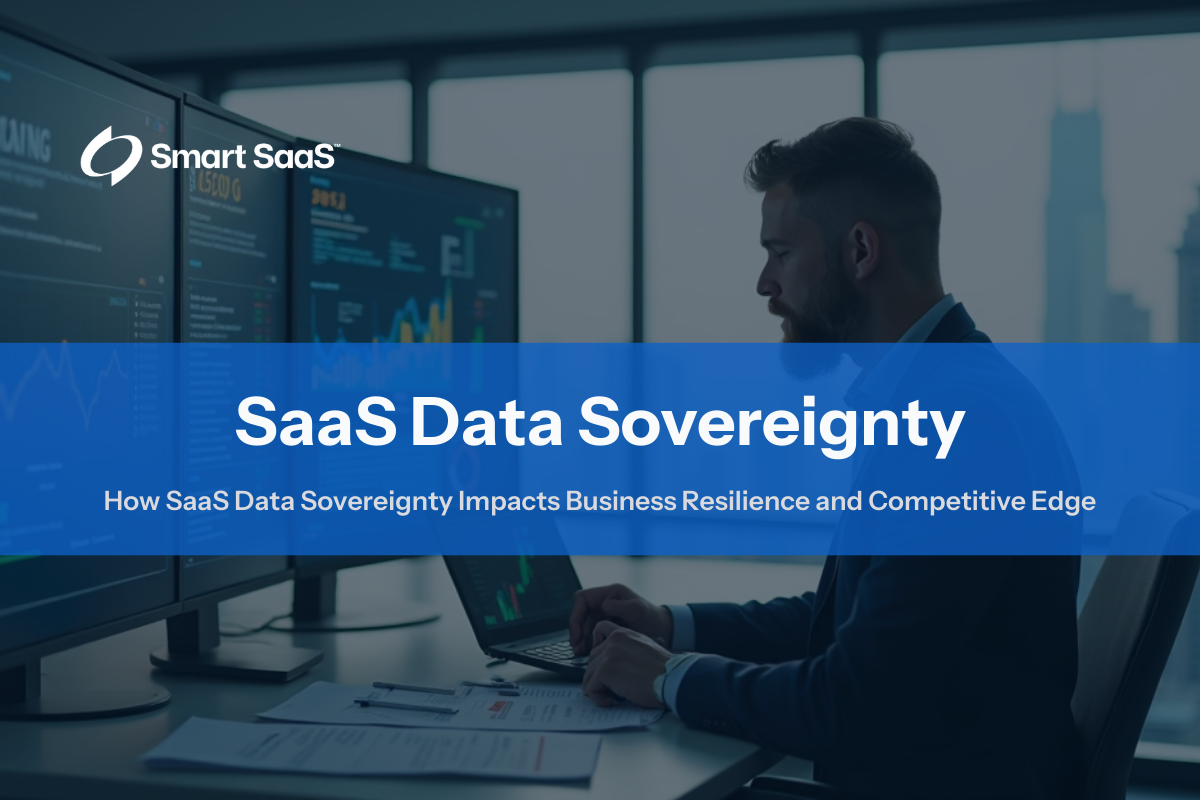

Wednesday, April 16, 2025
Kevin Anderson
In the rush to adopt cloud‑first solutions, many businesses overlook one of the most critical strategic levers in SaaS: data sovereignty. It’s not just a legal compliance checkbox. It's a business resilience strategy, a competitive differentiator, and a vital layer in customer trust architecture.
As regulators tighten their grip on data flows and global tensions reshape tech partnerships, knowing where your data lives—and under whose laws—can make or break your business operations.
This article dives deep into how sovereignty goes beyond storage to influence strategy, trust, and long‑term viability.

In a globally distributed cloud ecosystem, one SaaS login can result in data transfers across half a dozen countries. What seems seamless on the surface is actually governed by a complex web of jurisdictional control.
After the invalidation of the EU‑US Privacy Shield, thousands of companies scrambled to renegotiate contracts or migrate data—at significant cost and risk. Those with a pre‑defined sovereignty plan avoided emergency migrations and protected customer confidence.
According to IDC, reactive migrations cost 30‑40 % more than proactive data‑locality strategies. Successful SaaS buyers require vendors to support region‑locked instances and document every cross‑border flow. Tools with native data‑mapping dashboards—often found in SaaS management platforms—turn jurisdictional complexity into transparent reports for auditors.
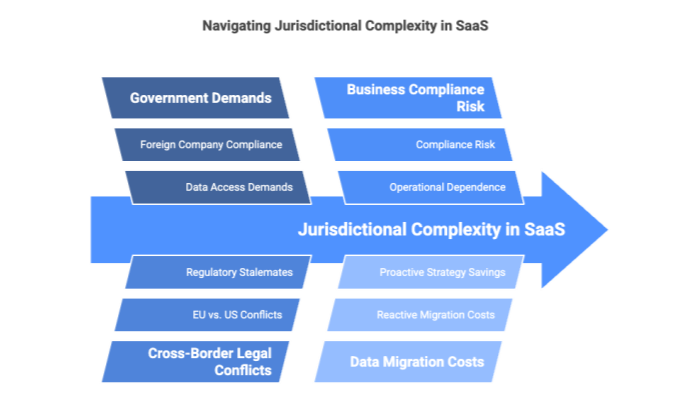

In an era where digital trust is currency, customers and partners increasingly want to know:
Companies that can answer these questions clearly and confidently set themselves apart from competitors relying on vague vendor claims.
Transparent data sovereignty controls foster trust, especially in B2B environments where compliance and risk management are part of every deal. Embedding sovereignty into your value proposition—similar to the openness promoted by data‑ownership frameworks—shortens sales cycles and reduces legal friction.


While some vendors build multi‑region storage options and detailed data‑governance protocols into their platforms, others offload responsibility to the customer or make vague promises like “we comply with applicable laws.”
Differentiators to Look For:
Providers like Workday and Salesforce Enterprise include sovereignty support—but only at higher tiers. Meanwhile, niche vertical platforms (Vertical SaaS innovators) build data‑locality into every plan, allowing even mid‑market customers to meet regional mandates without premium pricing.
During vendor selection, map data flows and DPAs against frameworks such as the SaaS business model you’re adopting. A transparent cost‑to‑sovereignty ratio helps avoid lock‑in and sudden up-charges when entering new markets.
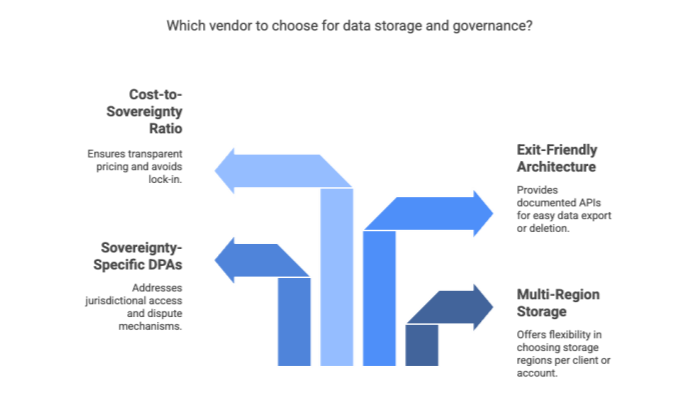

Planning to expand into a new region or acquire a company abroad? If your core systems aren’t sovereignty‑aligned, the deal could stall—or fall through.
M&A Impact: SaaS providers that can’t isolate or relocate data quickly create due‑diligence red flags. Acquirers may demand escrow arrangements or price adjustments to cover sovereignty remediation costs.
Global Operations: Multinational teams using different tools can create shadow sovereignty conflicts that compromise regulatory alignment. For example, a European subsidiary using an American HR platform might violate local works‑council rules if personal data leaves the EU.
Solution: Choose SaaS platforms with proven data segregation, tenant isolation, and multi‑region configuration. Providers that use container‑based architecture can “lift and shift” data in hours, not weeks.
According to Deloitte’s 2024 M&A report, sovereignty readiness shaved an average of 11 days off deal close timelines, translating to millions in opportunity cost savings.

Beyond fines or lawsuits, sovereignty failures create operational drag:
Missed Opportunity: Many companies treat data sovereignty reactively—after an audit or breach. The smart ones bake it into procurement and architecture from day one. Aligning sovereignty with growth planning mirrors the foresight needed when selecting enterprise SaaS pricing models; both decisions compound value over time.
Note: Forrester predicts that sovereignty‑driven vendor switches will increase 40 % in the next two years, favoring providers that publish region‑specific SLAs and transparent data‑transfer logs.
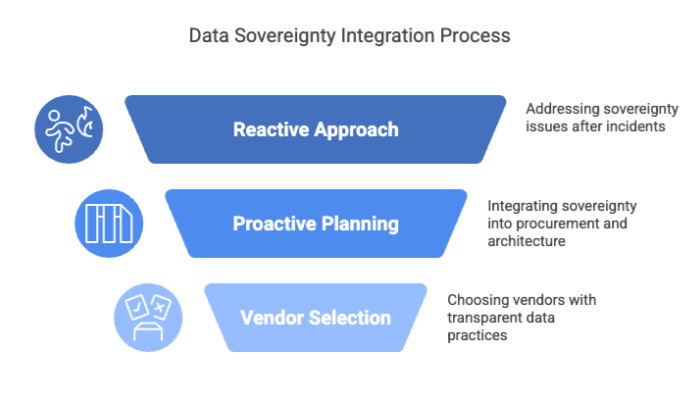

Here’s how to make sovereignty a part of your SaaS and privacy strategy:
Combining these steps with a robust risk‑assessment routine keeps your sovereignty posture resilient as you scale.
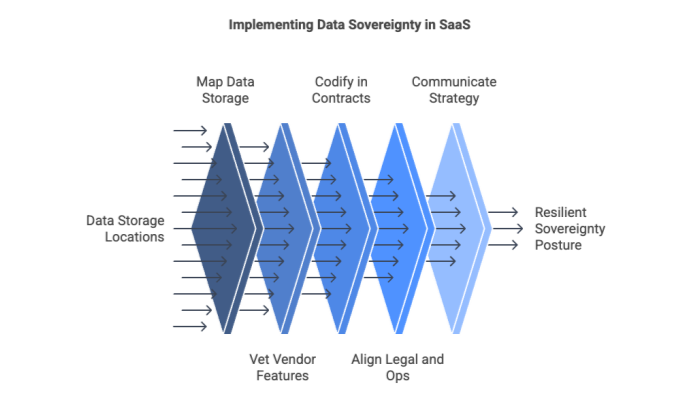

Future‑ready companies view data sovereignty not as a roadblock but as an opportunity:
It’s not just about avoiding fines. It’s about building a durable, adaptable foundation for growth in a fragmented data world. Aligning with Smart SaaS principles ensures sovereignty is embedded in product design, not bolted on later.


In the age of SaaS and global cloud ecosystems, sovereignty isn’t something to delegate. It’s something to own. Companies that proactively manage where their data lives, how it moves, and who governs it gain more than compliance—they gain control. Get ahead of the complexity.
Download the full eBook: Data Privacy in the SaaS Era and discover how to align sovereignty, trust, and scale in your cloud strategy.
